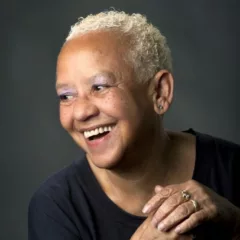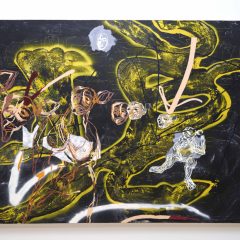[Rachel moves through a series of video “visions” and accompanying art objects created by Tiona McClodden — the Artblog editors]
A sleeping bag and bright blue shield mark the interior entrance of the Science Center at 35th and Market Streets. The pairing immediately transmits feelings of protection, fear, veneration, and shelter. An eerie familiarity is communicated as you begin to move through the space, gazing into portraits with fireworks transposed onto photographic surfaces.
The exhibition is Tiona McClodden’s Be Alarmed: The Black Americana Epic, Movement I – The Visions, on view at the Esther Klein Gallery through March 15. Co-presented by the Leeway Foundation, the Breadboard program at the Science Center and NextFab, the exhibit is part of the Leeway Art+Technology Residency and features the first of four films by Philadelphia-based McClodden.
Pairing video with physical objects
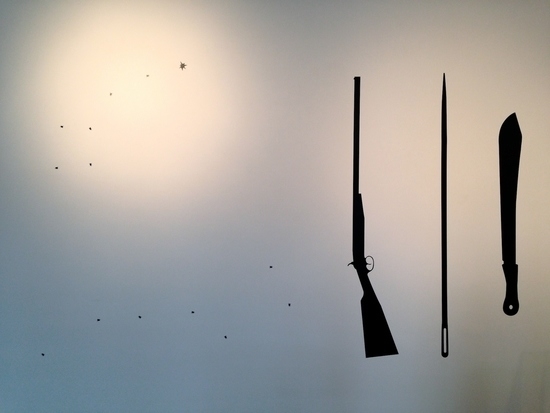
While the film is the main attraction, the viewer experiences objects first: a handmade shotgun, a Singer sewing machine, nails atop bullets, a silver grill. Craft mixes with violence in an enormously intriguing manner, prompting a feeling of paradoxical uncertainty. Dispersed among the objects are four film trailers–opportune glimpses into making sense of the objects on display. With provocative titles–“Family Tree,” “Spirit Away,” “Steal Away,” and “Initiation”–the trailers offer a look into the exhibition’s concept, propagating a sense of both intrigue and deprivation.
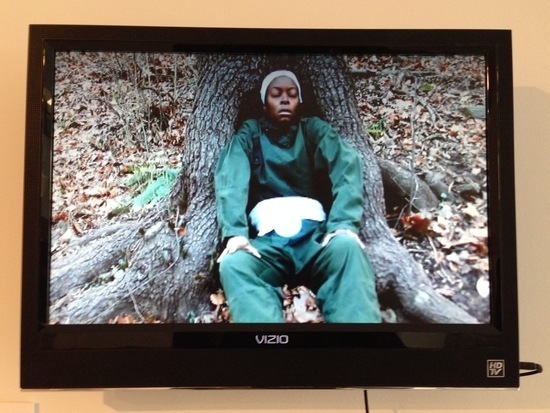
We watch a woman lie in the roots of a tree; fireworks and spirited cheers transposed over a portrait of a young child; police sirens filling the blackness of an open mouth; a woman shooting a man. Like the objects in the room, the trailers feel like a composition of vignettes, pieces of a puzzle, invitations to see without knowing what to look for. The setup–and the consequential discomfort produced in the viewer–is brilliant.
Four scenes tied together
Once you enter the screening room, you soon discover how the objects displayed produce meaning. The film is broken into four distinct scenes, together lasting approximately 40 minutes. The first, “Offerings,” takes place in the woods, a small stream providing tranquil background audio. Two characters interact: one seemingly homeless, sleeping amid the trees, the other seemingly imaginary, a memory materialized into human form. Ideas about topics like roots, where you sleep, and what follows you become visualized through entangled branches and running water.
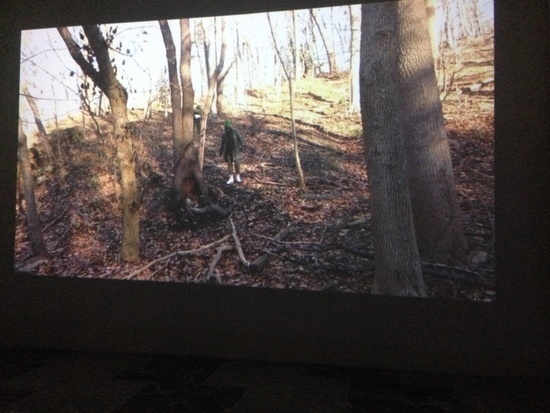
From a wooded landscape, the film moves to combustion: the handmade shotgun (and the process of making it) becoming McClodden’s focus. The scene foregrounds the sleeping bag and bright blue shield: the idea of what you carry with you has moved from a metaphorical idea to something important and literal. I won’t ruin the powerful symbolism, but I will say that the scene is full of dialectics: destruction and creation; binding and loosening; masculinity and femininity. The viewer is weightily carried into the next segment, immersed in the purposeful act of marking.
In scene three, “The Hem of Her Garment,” Philadelphia takes center stage. The protagonist walks in and out of the frame in a state of calm worry, a landscape of vacant brick buildings filling the screen behind her. She finds herself in front of a mural dedicated to Harriet Tubman, the work’s grandiosity emphasized and challenged as she clutches the wall. The scene radiates a sense of confinement–barred fences, walls, bricks–the contrast between the trees and running water of scene one directly complicated by the sound of cars whooshing by.
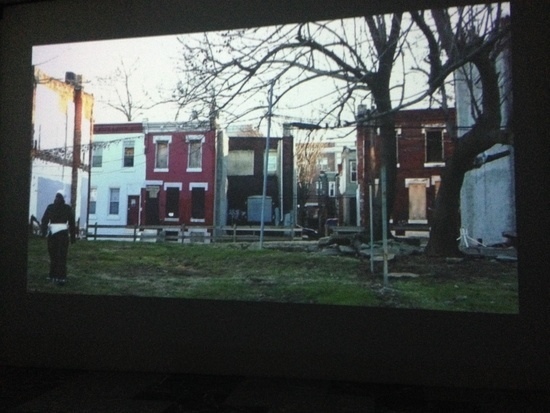
In the final scene, we are brought into a dilapidated church, bricks strewn across the ground. The national anthem plays in the background as the protagonist rubs her hand against a rusted bulldozer, seemingly searching through the rubble for something unknown. It ends as she lies atop the bulldozer, falling asleep.
Films for thought
As you exit the screening room, you walk back through the objects, experiencing them anew as film memorabilia, artifacts, remnants. Not all has been made clear–the artist purposefully internalizes direct meaning–but so many questions have been prompted. What do we carry with us? What roots are innate? How do we deal with the loss of history? What lingers over time?
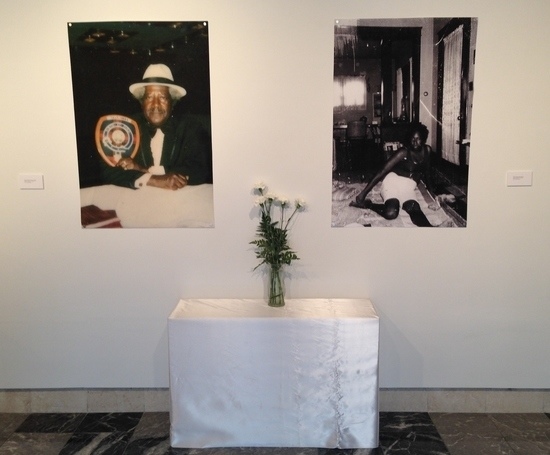
Throughout the exhibition and film, McClodden emphasizes accessibility–inviting the viewer in, but also retaining distance. The trailers become manifestations of this concept, intriguing us, but not revealing it too soon. In this way, we are provoked but not entirely satisfied.
Be Alarmed: The Black Americana Epic is still evidently in process. Three more films are still waiting to be seen. While the first installment is conceptually compelling, it could use slight editing–a few minutes trimmed and one fewer faction of four films with scenes, trailers, and bonuses. The brilliance of the artist’s idea becomes clouded by its layered organization. Nevertheless, despite the perceptible influence of artists such as Carrie Mae Weems, Ana Mendieta, and Kara Walker, McClodden ultimately succeeds in stamping the exhibition with her own creative voice.
In the end, McClodden has set up the viewer to be provoked through the exploration of genres, African-American history, mythologies, and personal narrative. Even though we have only seen a glimpse of the full story, it is evident that Tiona McClodden has something powerful to say.
Be Alarmed: The Black Americana Epic, Movement I – The Visions will be on view at the Esther Klein Gallery in Philadelphia until March 15th, 2014.


